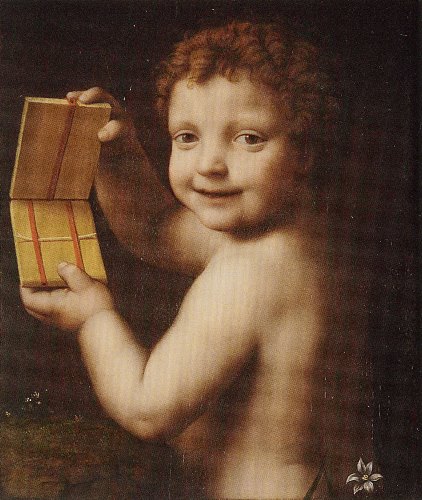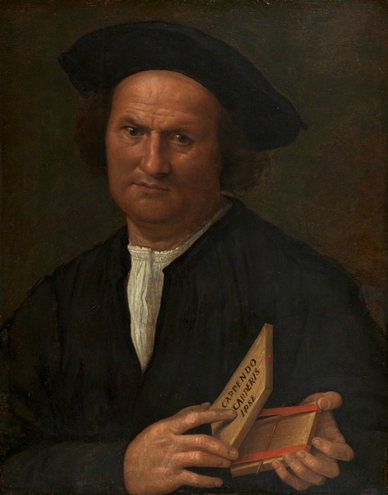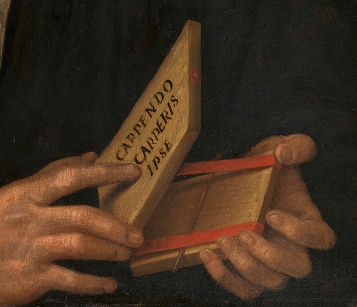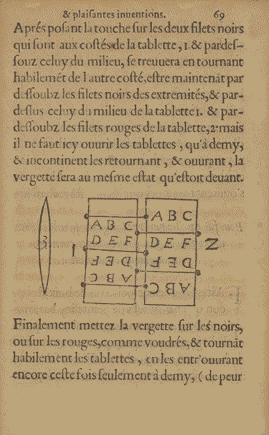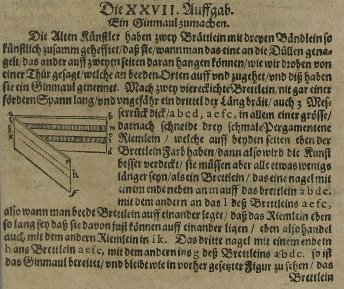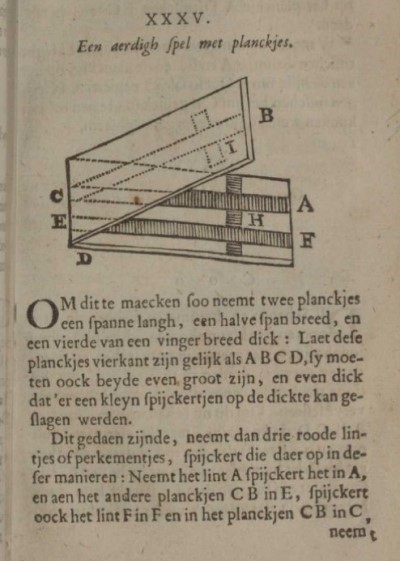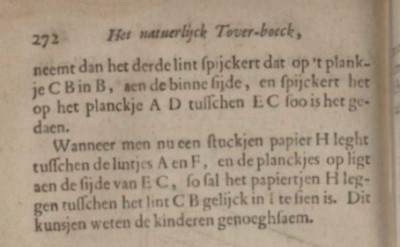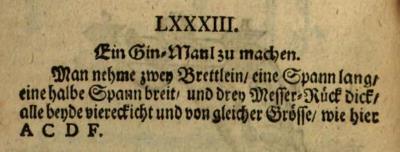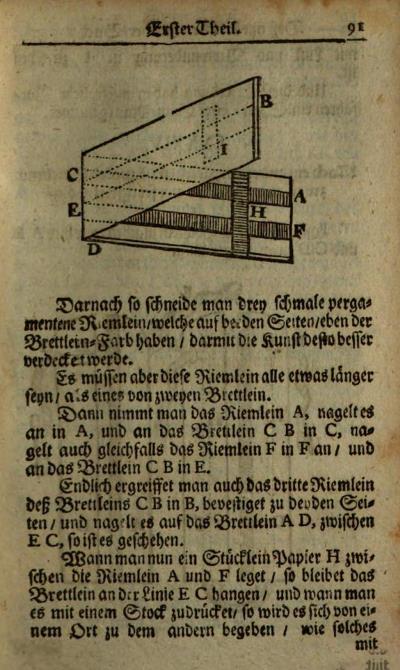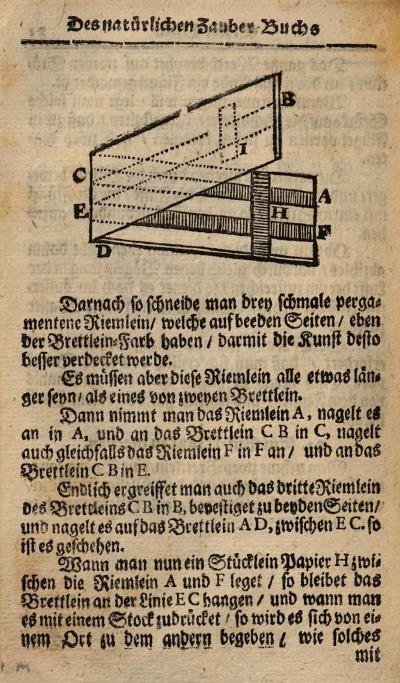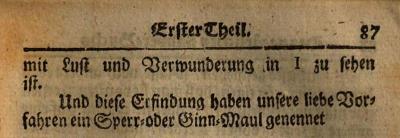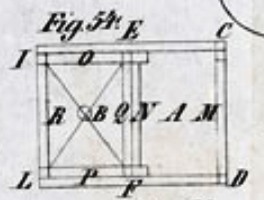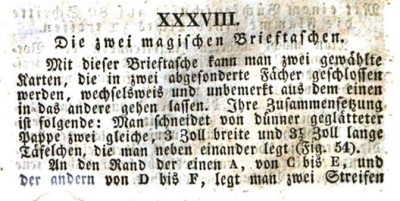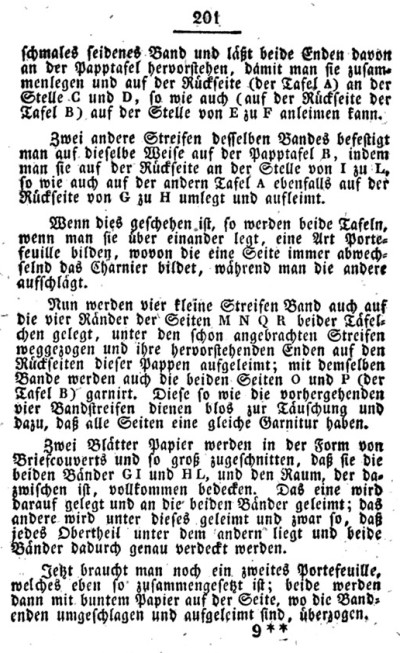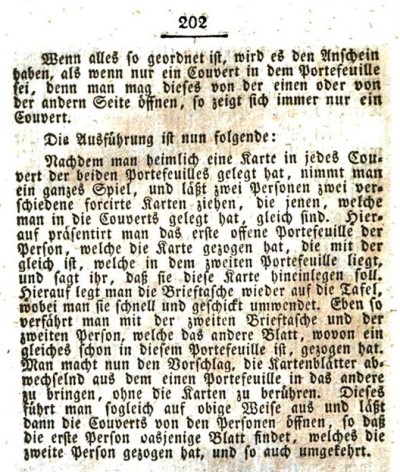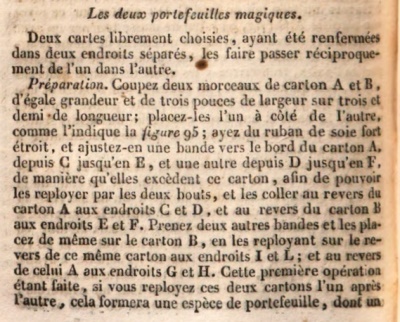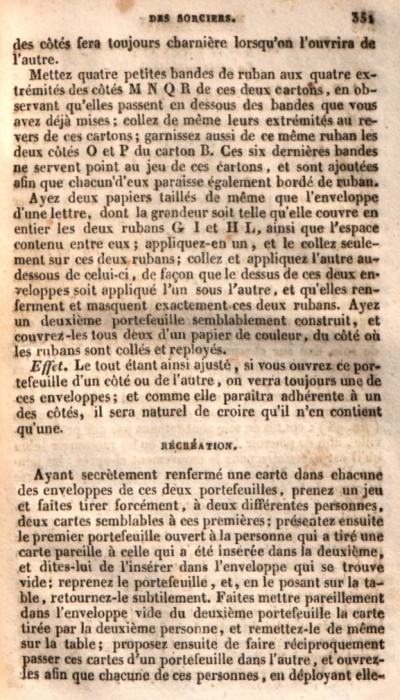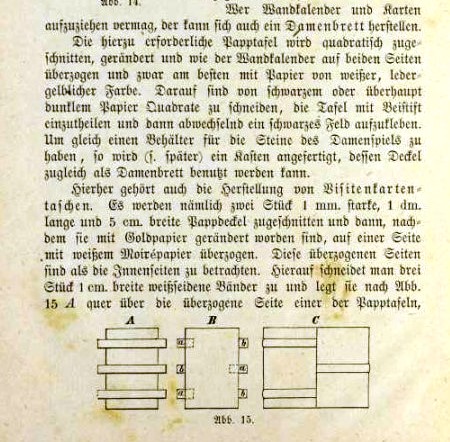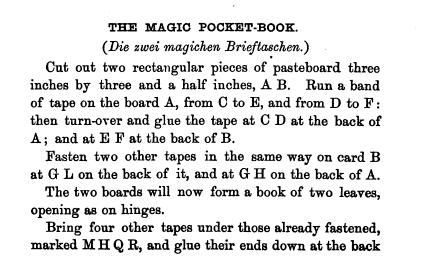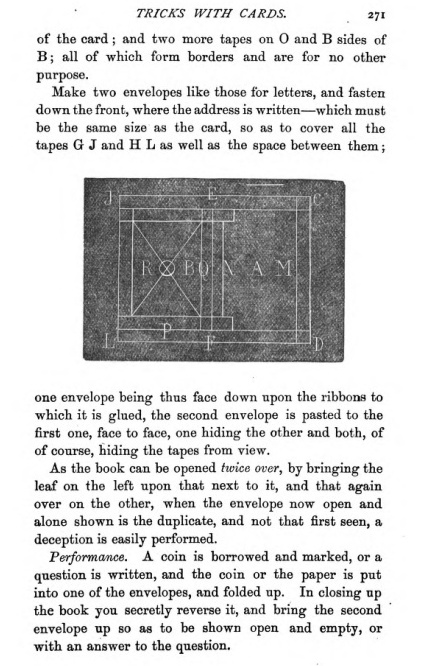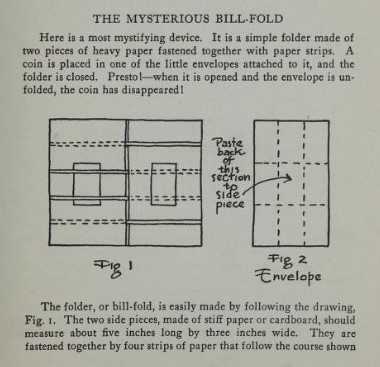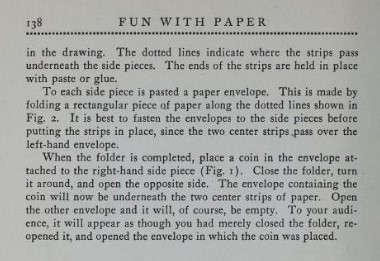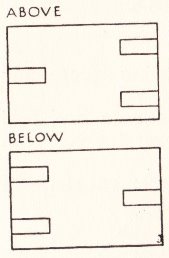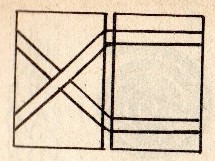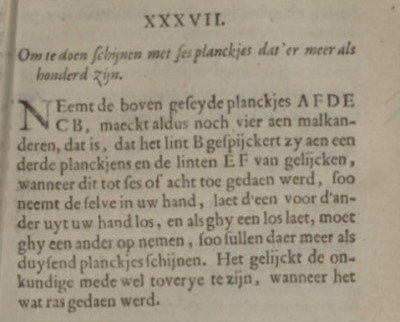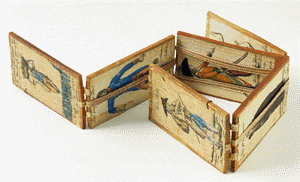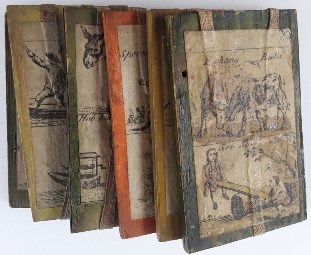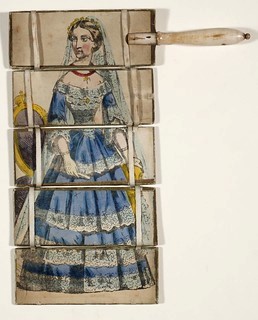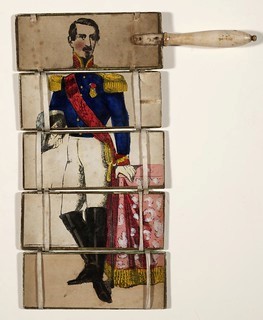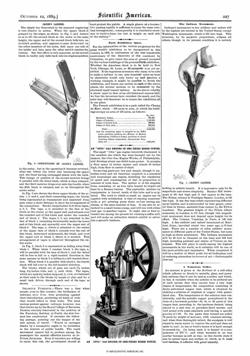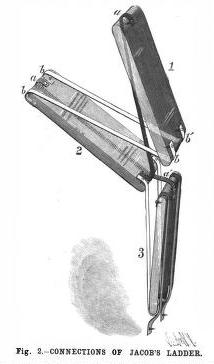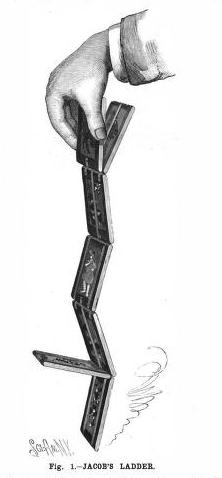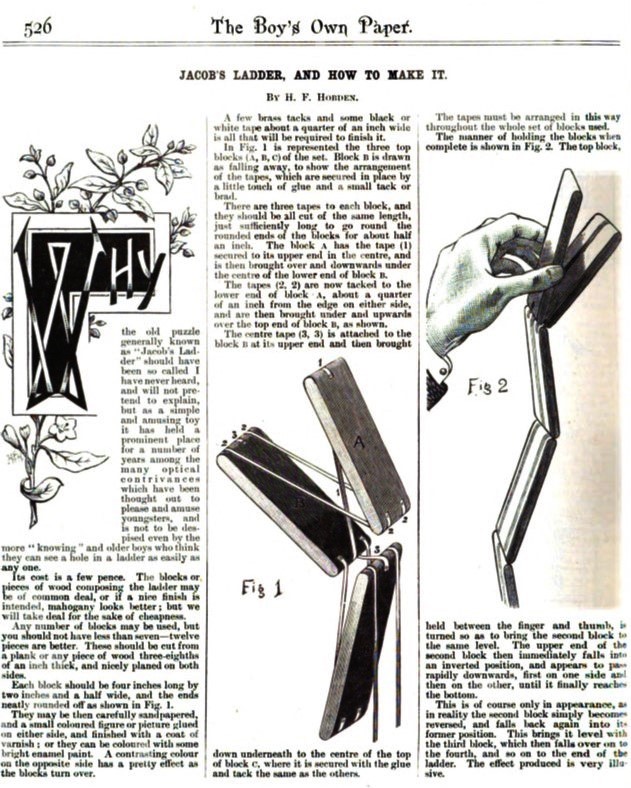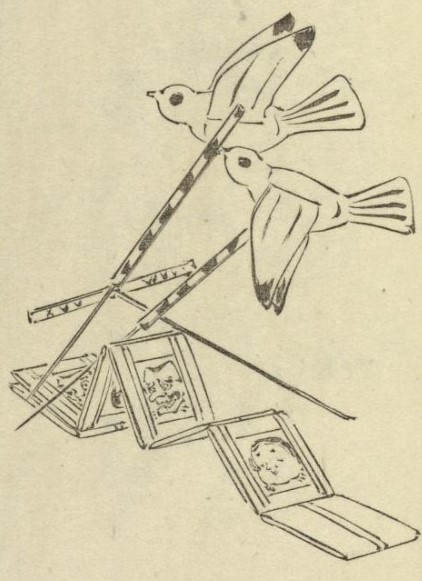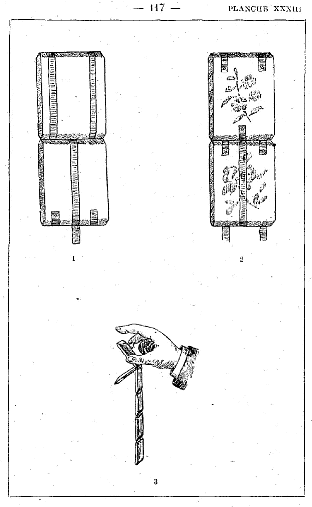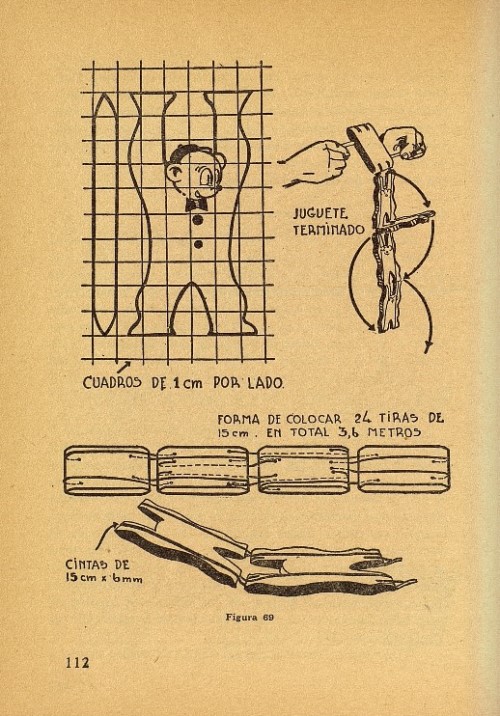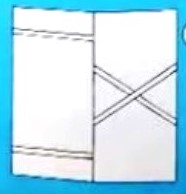| The Public Paperfolding History Project
Last updated 20/4/2025 x |
|||||||
| The Chinese Wallet / Jacob's Ladder | |||||||
| This
page is being used to collect information about the
history of the flexing toys now usually known as the
Chinese Wallet and Jacob's Ladder. These are of interest
to the historian of paperfolding because they are
precursors of flexagons. The name Chinese Wallet should
not be taken to imply that this toy is actually of
Chinese origin. Please contact me if you know any of this information is incorrect or if you have any other information that should be added. Thank you. ********** The Chinese Wallet 1502 The earliest known evidence for the existence of the Chinese Wallet comes from a description in the manuscript 'De Viribus Quantitatis' by Luca Pacioli which was written around 1502. According to the dissertation 'Luca Pacioli and his 1500 book De Viribus Quantitatis' (which can be found here), 'Pacioli describes how to construct the device with two wooden slabs and 3 straps, forming a “wallet”. Place a straw in between the single strip and close and open the wallet again in the other possible way to produce the straw trapped by the other two straps. Pacioli tells how old people entertain infants with this device. ********** c1515 The same device features in a painting by the Italian painter Bernadino Luini (1470 - 1533) which which dates from around 1515.
********** c1530 The design also appears, once again complete with straw, in another painting, this time by the Venetian Bernadino Licinio (1485 - 1565), which is said to date from between 1520 and 1530. The words written on the wallet, ‘Carpendo Carperis Ipse’ translate as ‘picking the fruit himself’ or possibly 'by plucking you yourself will be plucked'.
********** 1584 Instructions for making and operating such a wallet appeared in 'La Premiere partie des subtiles et plaisant inventions' by Jean Prevost, which was published in Lyons in 1584.
********** The Chinese Wallet design also appears: 1636 In 'Deliciae physico-mathematicae, oder mathematische und philosophische Erquickstunden' by Daniel Schwenter, which was first published in 1636.
********** 1684 In the 1684 edition of 'Het natuurlyk tover-boek' by Simon Witgeest.
********** 1702 In 'Neueröffnete Raritäten und Kunst-Kammer' by Simon Witgeest, which was published in Nurnberg in 1702.
********** 1707 In 'Natürliches Zauber-Buch oder neuer Spiel-Platz der Kunste' by Simon Witgeest, which was published in 1707.
********** 1813 In 'Die Zauberkunst' by Carl Ferdinand Leischner, which was published in Ilmenau, Thuringia, in 1831. In this version the Chinese Wallet is combined with the Buddha Papers and is used to swap the positions of the two paper envelopes, which contain playing cards, and are glued either side of the tapes of the wallet.
********** 1819 As 'Die sonderbare Klappe' (The strange flap) in 'Leichte Künsteleien zum Vergnügen und zum Nutzen für Kinder und Nichtkinder' by Dr Heinrich Rockstroh, which was published by Ludwig Wilhelm Wittich in Berlin in 1819.
********** 1829 As 'Les deux portefeuilles magique' in 'Manuel Complet des Sorciers' by M Comte, which was published in 1829. The work describes how to make two Chinese Wallets, to each of which a set of Buddha Papers is added. A playing card placed in one can then be shown to have vanished and to have appeared in the other, which was previously empty.
********** 1872 In 'Das Deutschen Knaben Handwerksbusch' by Barth and Niederley, which was published in Bielefield and Leipzig in 1872.
********** As The Magic Pocketbook (Die zwei magichen Brieftaschen) in 'Hanky Panky' by W H Cremer, Jun, which was published by John Camden Hotten in London in 1872. The fact that this effect is given a German name in brackets, which other effects are not, may mean that the author has taken this from an earlier German source.
********** 1939 As 'The Mysterious Billfold' in 'Fun with Paper' by Joseph Leeming, which was published by Spencer Press Inc in Chicago in 1939, where it is teamed up with the Buddha Papers.
********** 1940 In 'At Home Tonight' by Herbert McKay, which was published by Oxford University Press in London, New York and Toronto in 1940, as 'A Note-Case'.
********** 1949 As 'Porte-Billets' inn 'Au Pays des Mains Agiles', which was published by Editions Fleurus in Paris in 1949.
********** Jacob's Ladder 1684 As far as I know instructions for making this design first appear in the 1684 edition of 'Het natuurlyk tover-boek' by Simon Witgeest. The seventeenth century Dutch of this section is not easily amenable to translation but it seems to refer back to the diagram for the Chinese Wallet (see above) and to say that additional boards and ribbons can be added so that there are six or eight in all. It also seems to describe the way in which one board can appear to fall from top to bottom of the design so that 'it appears to the ignorant to be a bit of magic'.
********** 1820 The Winterthur Museum possess a six-panel Jacob's Ladder, made of wooden panels covered with paper and linked with string, which can be dated to between 1770 and 1820. (Information from Michel Grand.) The clips at the side of the panels were probably originally used to hold small bells.
********** There is another, quite similar, version, of much the same age, in the Cotsen Children's Library collection at Princeton University.
********** 1840 Toronto Public Library possesses a five-panel Jacob’s Ladder of Queen Victoria and Prince Albert, both in their wedding clothes, which can be dated to 1840. When the handle is rotated the tablets flip over in turn to reveal the other person. (Information from Michel Grand.)
********** 1850 Charles Dickens describes a Jacob's Ladder toy in his short story 'A Christmas Tree', published in the periodical 'Household Words' in 1850: '... but the Jacob’s Ladder, next him, made of little squares of red wood, that went flapping and clattering over one another, each developing a different picture, and the whole enlivened by small bells, was a mighty marvel and a great delight.' ********** 1876 Charles Dickens also wrote about this toy in his article 'Toys, Past and Present' in the issue of the periodical 'All the Year Round' for October 1st 1876: 'It consisted of six oblong pieces of wood, adorned with pictures on both sides, and so connected with tapes that when the top piece, which was held in the hand, was turned down, all the others would turn down likewise by an apparently spontaneous movement, causing a new series of pictures to be presented to the eye, which was highly gratified by the change, as were also the ears by the clattering of the wooden tablets and the tinkling of some little bells which they were decorated.' ********** 1889 There is an article about the Jacob's Ladder in Scientific American, v6, n15, p227, published on 12th October 1889. The article can be found online at here.
********** The design also appeared in issue 592 of the 'Boy's Own Paper' for 17th May 1890 in an article titled 'Jacob's Ladder and How to Make It' by H F Hobden. My thanks to Tung Ken Lam for sourcing this illustration.
********** 1894 A drawing of a Jacob's Ladder appears in the illustrated book 'Gekko manga' by Azuma Kenzaburo, which was published in 1894. This is the earliest illustration of this toy that I have been able to find in a Japanese source.
********** 1899 Jacob's Ladder also appears in 'Le Livre des Amusettes' by Toto, which was published in Paris by Charles Mendel in 1899.
********** 1932 'Winter Nights Entertainments' by R M Abraham, which was first published by Constable and Constable in London in 1932, contained a description of a Jacob's Ladder toy made from interlocking rings.
********** 1944 'Ideas Practicas para Juegos y Entretenimientos' by Jorge A Duclout, the second edition of which was published in Buenos Aires in 1944.
********** 1965 The 1965 Rupert Annual contains instructions for making 'Rupert's Note-Case', which is the Chinese Wallet.
********** |
|||||||
